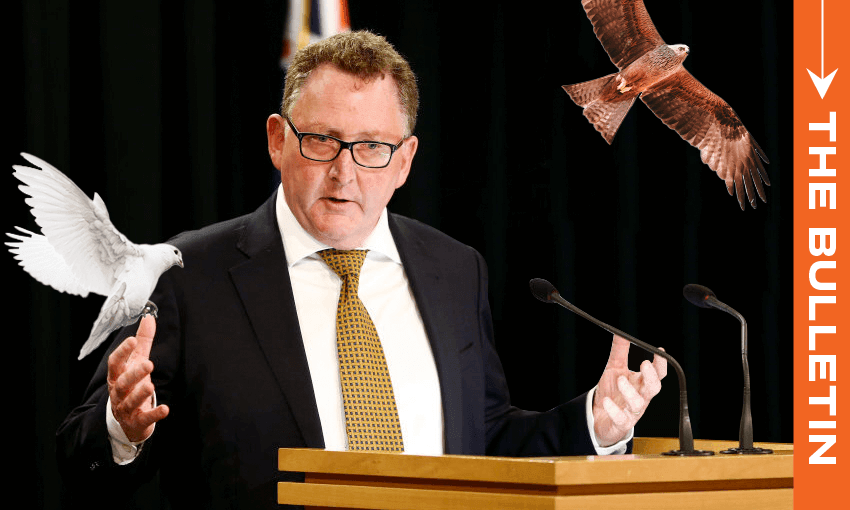Probably. The Reserve Bank stuck with its forecast of the OCR peaking at 5.5% but still managed to deliver shock and orr with its commentary, writes Anna Rawhiti-Connell in this excerpt from The Bulletin, The Spinoff’s morning news round-up. To receive The Bulletin in full each weekday, sign up here.
‘Dovish tone’ surprises
For maybe the first time since I started writing The Bulletin and covering official cash rate (OCR) announcements, I can finally use the word “dovish”. The hawks have left the building. If you’re still wondering what these economic bird analogies mean, here’s what I read when I started this gig and could no longer pretend I knew what the bird words meant. The Reserve Bank (RBNZ) announced a lift in the OCR by 25 basis points to 5.5% yesterday afternoon and said the OCR hike cycle that started in October 2021 has likely ended after 12 consecutive rate hikes. Though the bank was just sticking with its November forecast of 5.5% as the peak OCR, the markets and many commentators were surprised by the bank’s “dovish” tones after expecting government spending and net migration figures to be assessed as inflationary, and therefore requiring the OCR to go as high as 6%. If “dovish” isn’t the word for you, you can always run with “chill”, as Tom Pullar-Strecker has done in The Post (paywalled), when describing the RBNZ’s assessment of the economic outlook.
Consumer spending slowing
Unusually, the Monetary Policy Committee took the decision to a vote with two of the seven voting members wanting no increase at all. In a statement the committee said “the level of interest rates are constraining spending and inflation pressure” and inflation pressures at home and abroad have been easing. It pointed to slowing consumer spending which was supported by the latest retail spending data from Stats NZ that showed the total volume of retail sales falling by 4.1% in the March quarter. Unlike Treasury, the bank is still forecasting a recession but a very shallow one in the June and September quarters this year.
What does it mean for homeowners?
As Stuff’s Susan Edmunds reports, economists think home loan interest rates are probably about as high as they are going to get. Kiwibank chief economist Jarrod Kerr said wholesale markets had priced in an OCR peak of nearly 6% in the past week. While the RBNZ doesn’t see a lowering of the OCR until September 2024, most economists are expecting home loan rates to start to drop in early 2024. However, as BusinessDesk’s Rebecca Howard reports (paywalled), many economists are also saying that despite the forward guidance from the RBNZ, they think a further OCR hike could be possible. At this point, we throw up our hands and place our fate in the lap of the Gods.
RBNZ relaxed on government spending and migration
In The Post this morning (paywalled), Luke Malpass describes yesterday’s rate hike as one “that didn’t realise the worst fears of Labour Party strategists” with the RBNZ essentially giving the budget a “pass mark”. RBNZ governor Adrian Orr described fiscal policy as “more of a friend than foe to monetary policy”. Malpass writes that the RBNZ has basically assessed that the government will spend a bit more than the central bank expected in February but that the size of government spending as a portion of the economy will contract over the next few years. Cyclone recovery and repair spending, rather than other discretionary budget spending, seems to be the drive behind the short-run spending assessment. Crucially, for all of us who have lived with a small Orr in our ears every time we took out our wallets, Orr said we’d cooled the jets.


